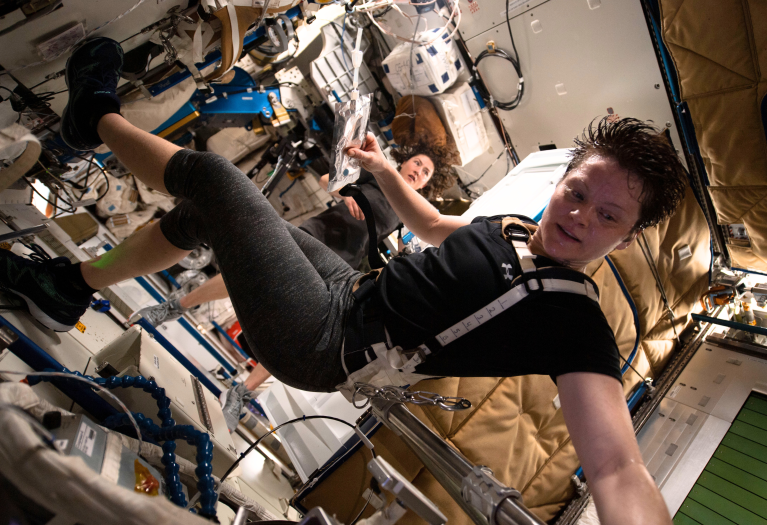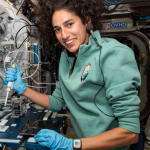About Human Health Countermeasures
The Human Health Countermeasures (HHC) element of NASA’s Human Research Program (HRP) seeks to understand the physiological effects of spaceflight and develop strategies to mitigate those with detrimental effects on human health and performance.

The HHC element provides biomedical expertise for the development and assessment of medical standards, vehicle and spacesuit requirements, and countermeasures to risks associated with human space travel to ensure crew health during all phases of flight. These countermeasures include:
- Pre-flight countermeasures like physical fitness and exercise regimens, as well as physiologic adaptation training. Prior to flight testing, candidate profiles are developed and refined using ground-based studies.
- In-flight countermeasures involving nutritional health, physical fitness, pharmaceuticals, and sensory-motor training protocols.
- Post-flight countermeasures emphasizing rehabilitation strategies and target a return to health on Earth.
HHC is comprised of five portfolios that address physiological research, countermeasure validation, and technology development. The portfolios are known as: Vision and Cardiovascular, Exercise and Performance, Multi-System, Bone, and Technology and Infrastructure.
HHC partners with external organizations to develop countermeasures that mitigate spaceflight health risks and develop technologies that reduce resource consumption for humans that live and work in space. Individual and team investigators interested in working with HHC specifically and HRP in general can learn more at HRP’s collaboration portal.
























